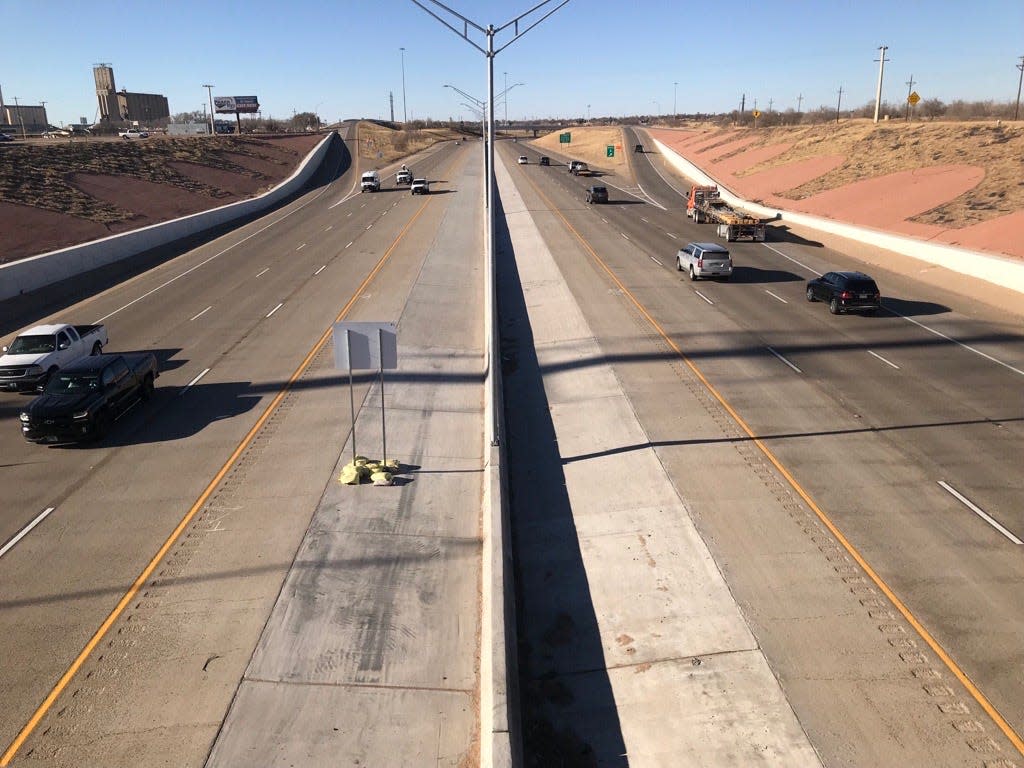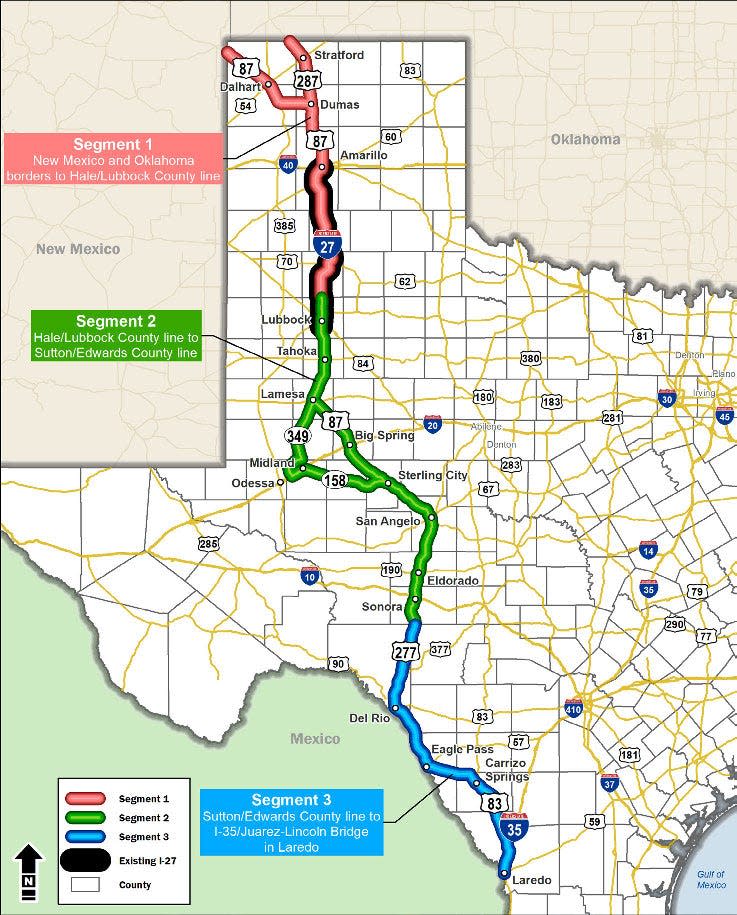Cruz, Cornyn introduce legislation to name I-27 extension project

- Oops!Something went wrong.Please try again later.
- Oops!Something went wrong.Please try again later.
- Oops!Something went wrong.Please try again later.
Area lawmakers are moving forward with a small but substantial next step toward extending Interstate 27 in Texas and beyond.
U.S. Senators Ted Cruz and John Cornyn, R-Texas, and Sen. Ben Ray Lujan, D-N.M., have introduced a bill to formally name the recently federally designated Ports-to-Plains Corridor as "Interstate 27." Rep. Jodey Arrington, R-Lubbock, is expected to introduce companion legislation in the U.S. House.
The legislation — the I-27 Numbering Act of 2023 — simply names the previously designated corridor, which was not previously numbered when it was federally designated. Additionally, Cruz's office said, this new legislation would name the current Routes 158 and 349 from Sterling City to Lamesa as I-227 and the current Route 87 from Dumas to the Oklahoma border as I-327.

More: Raton to Laredo corridor added to Interstate Highway System, paving way for I-27 expansion
In March last year, the Ports-to-Plains Corridor from Raton, New Mexico to Laredo, Texas was added to the federal Interstate Highway System as part of a sweeping $1.5 trillion FY 2022 omnibus appropriations bill (which Cruz ultimately voted against), marking the first step for I-27 to expand from its current Lubbock-to-Amarillo route south to the Mexican border at Laredo, through the Texas Panhandle, eventually north to the Canadian border.
According to a Texas Department of Transportation study, the extension of I-27 could mean big improvements to safety on Texas’ roads, decreasing the state’s annual crash rate by as much as 21 percent. It could also increase the state’s gross domestic product by more than $55 million and add upwards of 22,000 new jobs, Arrington’s office previously said.
"Our efforts to designate the Ports-to-Plains corridor as a future interstate will expand opportunity for farmers, ranchers, and producers across Texas," Cornyn said in a news release. "Formally naming the Texas and New Mexico segments Interstate 27 will close the loop on bringing this critical project to fruition, and I am grateful for Senator Cruz and Congressman Arrington’s partnership on this important designation."
"The Ports-to-Plains Corridor, which expands from Texas through the Heartland, serves as a critical tool for enhancing America’s agriculture and energy dominance," Arrington added. "This legislation to number the Texas and New Mexico portions of the Corridor as Interstate Route 27 is one step closer to ensuring the nation's largest agricultural and energy production centers located in West Texas are more accessible to the rest of the country."
This article originally appeared on Lubbock Avalanche-Journal: Cruz, Cornyn introduce legislation to name I-27 extension project

